Hot stamping foil is a multi-layered composite flexible material (including PET base film, release layer, color layer, aluminum plating layer and glue layer) whose slitting process is extremely sensitive to tension, edges, knives and surface protection. Mistakes in any link can lead to scrap.
Here's a detailed inventory of its key technologies:
1. Tension control system - the "soul" of the slitting machine
Tension control is the core technology of the slitting machine, which directly determines the tightness, flatness and whether there is "internal injury" (such as tensile deformation, wrinkles, rubber overflow, etc.) of the slitting membrane.
• Why is it important?
◦ Excessive tension: It will stretch the hot stamping foil, causing the pattern to be deformed (inaccurate during subsequent hot stamping), and even pulling off the foil. For hot stamping foil with aluminized and colored layers, excessive tension can cause slippage, cracking, or blackening between layers, seriously affecting the appearance and transfer effect.
◦ Too small tension: The winding is loose, resulting in "chrysanthemum pattern" (wrinkled), collapsed edges, and even unable to be stamped normally.
◦ Tension fluctuations: During the slitting process, the coil diameter is constantly changing from unwinding to rewinding, and the tension must remain constant. Any fluctuations will form a circle of tight and loose traces on the coil, which becomes a quality hazard.
• How is it achieved?
◦ Fully automatic tension control system: usually adopts the "closed-loop vector control" mode.
▪ Core components: tension sensor (or floating roller displacement sensor), PLC (programmable logic controller), magnetic powder clutch/brake (or more advanced servo torque motor), variable frequency drive.
▪ Workflow:
1. Unwinding tension: The reverse resistance moment is provided through magnetic particle brakes or servo motors to control the unwinding tension. The system automatically adjusts the current of the brake or the torque of the servo motor according to the set tension and the actual tension detected in real time, keeping the unwinding tension constant.
2. Rewinding tension: Provide forward torque through a magnetic powder clutch or servo motor to control the rewinding tension. The system uses taper tension control – the winding torque increases as the winding diameter increases, but the surface tension needs to be slightly reduced to prevent the core from being crushed or the outer foil from being embedded in the inner layer. The PLC automatically calculates and outputs a perfect taper curve.
◦ Trend: High-end slitting machines generally use servo motors as the actuator of each control point, which has faster response, more accurate control, and is more energy-saving and maintenance-free.

2. Correction system - the key to ensuring "edge flush"
The role of the Edge Position Control (EPC) is to ensure that the foil always runs along the correct path before entering the slitting knife, ensuring that the edges of the coil are neat and there is no "serpentine" running after slitting.
• Why is it important?
◦ Master coil defects: The raw material master coil itself may have irregular edges such as thin edges and drifting edges.
◦ Operational deviation: Factors such as equipment installation, roller parallelism, and stress relief of the material itself can cause the material to deviate during transmission.
◦ Consequences: If the deviation is not corrected, the slitting knife will cut to the pattern, resulting in the product being scrapped; After winding, it will form a split-layer "step", and the edges of the coil will be uneven, making it unusable.
• How is it achieved?
◦ Core components: guiding sensors (ultrasonic, infrared or CCD vision sensors), guiding controllers, actuators (usually pneumatic or servo motor-driven swing roller devices).
◦ Workflow:
1. The sensor detects the edge position of the foil in real time.
2. The controller compares the detected position signal with the preset position and calculates the amount of deviation and direction.
3. The controller gives a command to drive the actuator (swing roller) to swing at a small angle to "guide" the foil back to the correct path.
◦ Installation position: A guiding system is usually set up after unwinding, before slitting, and before winding to ensure the edge accuracy of the two key stations of slitting and winding.
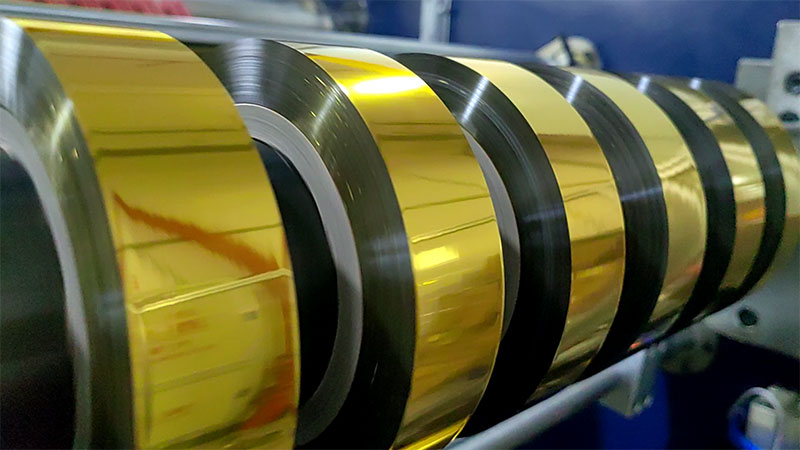
3. Slitting knife technology - precise "surgery"
The slitting method directly affects the quality of the cut, the amount of burr and the tool life.
• Slitting method:
◦ Flat knife slitting (shearing): similar to the principle of scissors. A round knife (bottom knife) and a round knife above it (top knife) interact to shear.
▪ Advantages: Flat incision, no burrs, no powder. It is the preferred method of foil cutting because it produces a clean cut and prevents dust from contaminating the glue surface of the foil.
◦ Circular knife slitting (pull cutting): A sharp circular knife presses down on a lower hardness bottom roller, using the pressure and linear speed difference to "pull" the material.
▪ Advantages: Suitable for thicker materials, lower cost.
▪ Disadvantages: It may produce burrs and dust, and the risk of contamination of the foil foil layer is high, so it is generally rarely used.
• Tool material and design:
Tools are typically made of high-speed steel (HSS) or carbide (tungsten steel). Carbide inserts are more wear-resistant and have a longer lifespan, making them suitable for long-term high-speed slitting.
The tool holder design needs to be designed with high-precision fine-tuning capabilities to quickly and accurately set the slitting width.
◦ Trend: Automatic tool adjustment system, each tool holder is driven by servo motor, and the width value can be entered on the HMI man-machine interface to automatically complete the adjustment of all tool positions, which greatly improves efficiency and decoding.
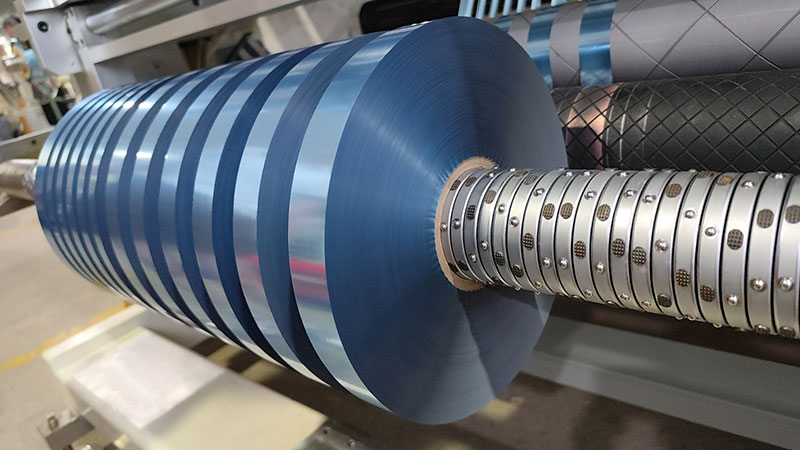
4. Other auxiliary key technologies
In addition to the above three cores, the following technologies are also crucial:
• Surface contact roller (S-wrap) transmission: The foil passes through multiple fixed rollers with large wrapping angles, increasing the friction and stability of the transmission, avoiding slippage, and reducing tension fluctuations.
• Static Eliminator: Hot stamping foil (especially PET base film) generates a large amount of static electricity during high-speed slitting friction, leading to dust adsorption, uneven coiling, and even operational risks. Static eliminators effectively neutralize electrical charges.
• EPC/LPC system: In addition to edge correction (EPC), for materials with transparent or specific markings, line array CCD sensors are also used for line position correction (LPC, Line Position Control) to ensure slitting accuracy by identifying printed lines.
• Quality monitoring system: High-end slitting machines can integrate an online visual inspection system to detect defects on the surface of hot stamping foil, such as scratches, missing coatings, bubbles, etc., in real time, and automatically mark or sort.
summary
A high-performance hot stamping foil slitting machine is a precision mechatronic system:
| Key technologies | Core features: | Impact on product quality |
| Tension control | Keep the material running under stable and appropriate tension | The tightness and flatness of the coil, whether it is stretched and deformed or wrinkled |
| Guidance Correction System (EPC) | Ensure that the edges of the material are always aligned in the correct path | Wrap the edges neatly and avoid cutting into the pattern |
| Slitting knife technology | Precise and clean cutting of materials | Cut quality, presence or absence of burrs and dust contamination |
| Transmission and guide roller system | Smoothly transfer materials and reduce slippage and vibration | The basis for operational stability and tension control |
| Static elimination | Eliminates static electricity generated by high-speed slitting | Avoid dust adsorption, ensure safe operation, and neatly reel the coil |
| Automation and diagnostics | Integrated control, parameter memory, fault warning | Increase productivity, ensure consistency, and reduce operator dependency |
These technologies are interlocked, ensuring that the hot stamping foil slitting machine can produce high-quality coils with accurate dimensions, neat winding, clean incisions, and no internal injury pollution, laying a solid foundation for the subsequent hot stamping process.



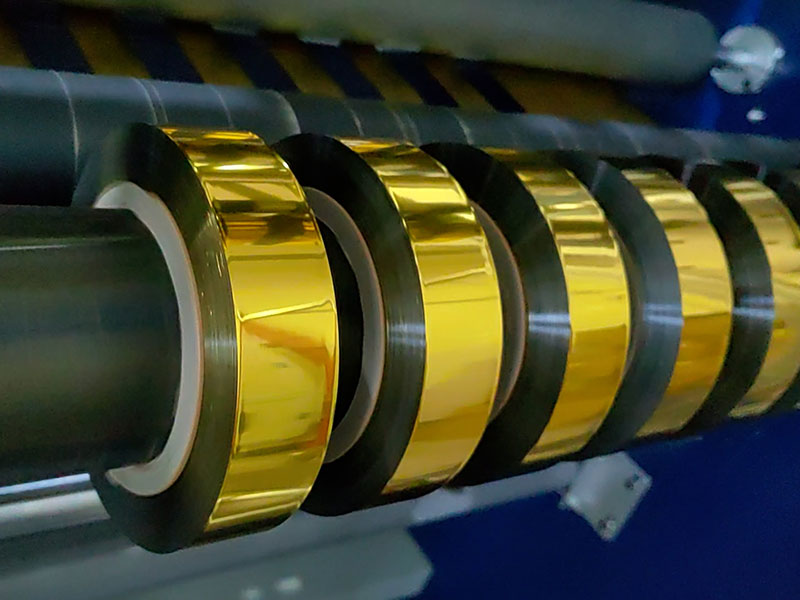
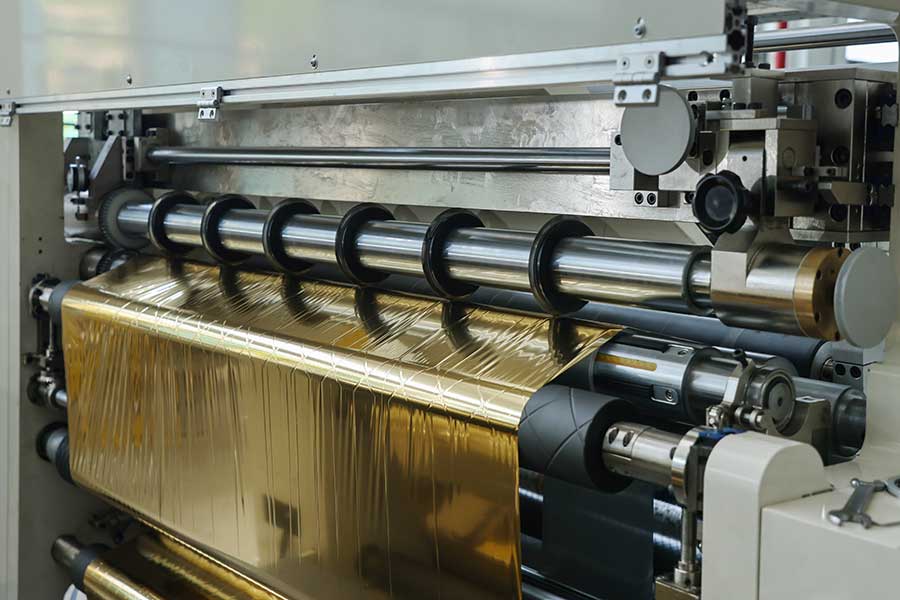
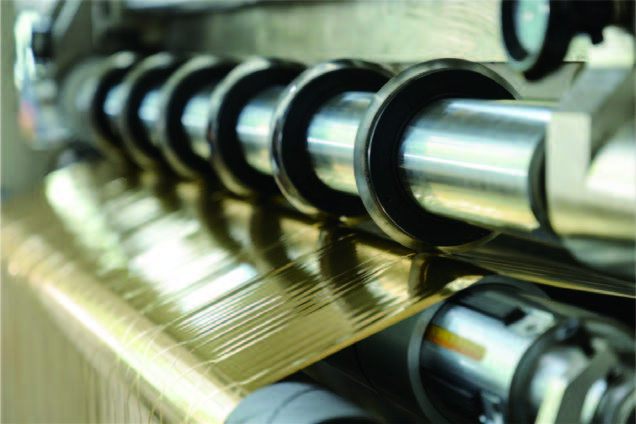
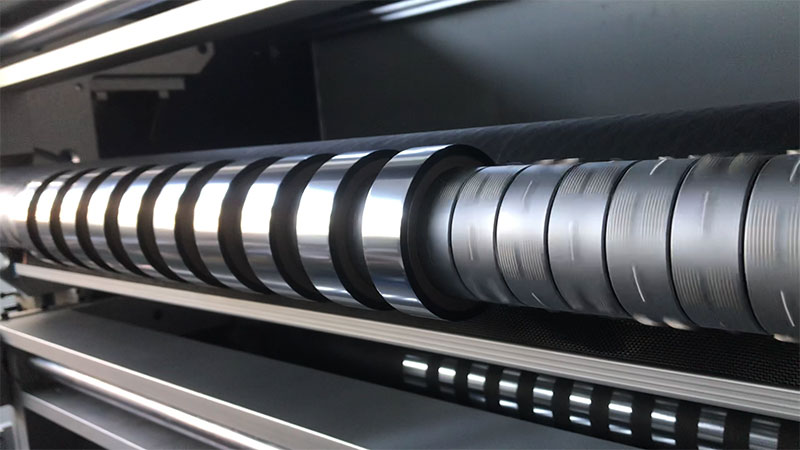
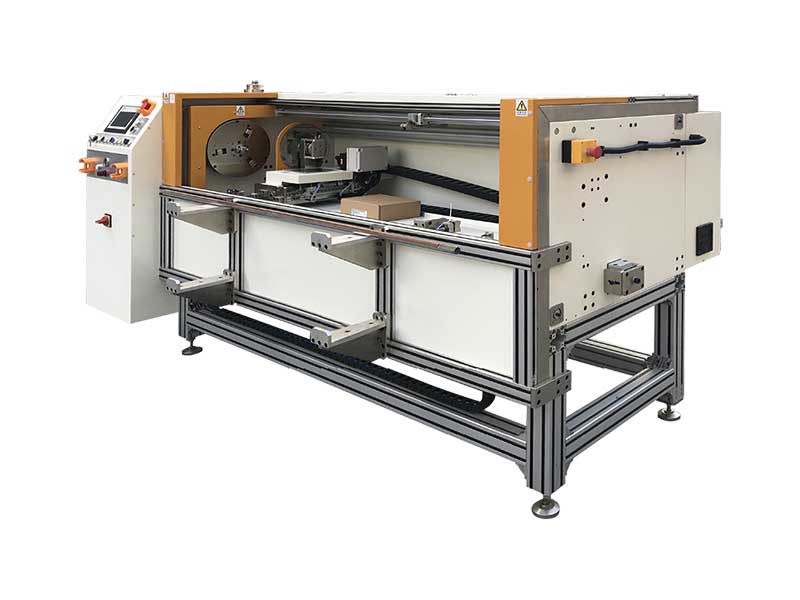 Automatic Foil Roll Cutting Machine
Automatic Foil Roll Cutting Machine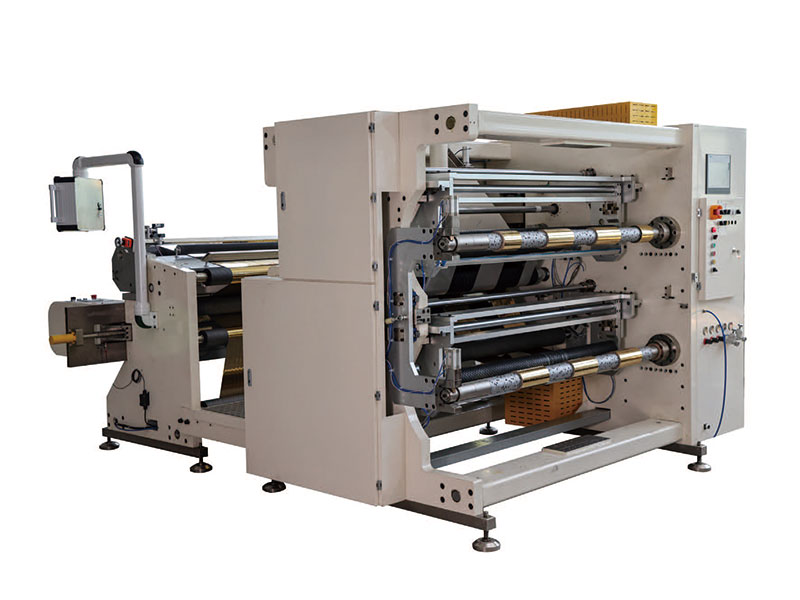 1400mm Hot Stamping Foil Slitting Machine
1400mm Hot Stamping Foil Slitting Machine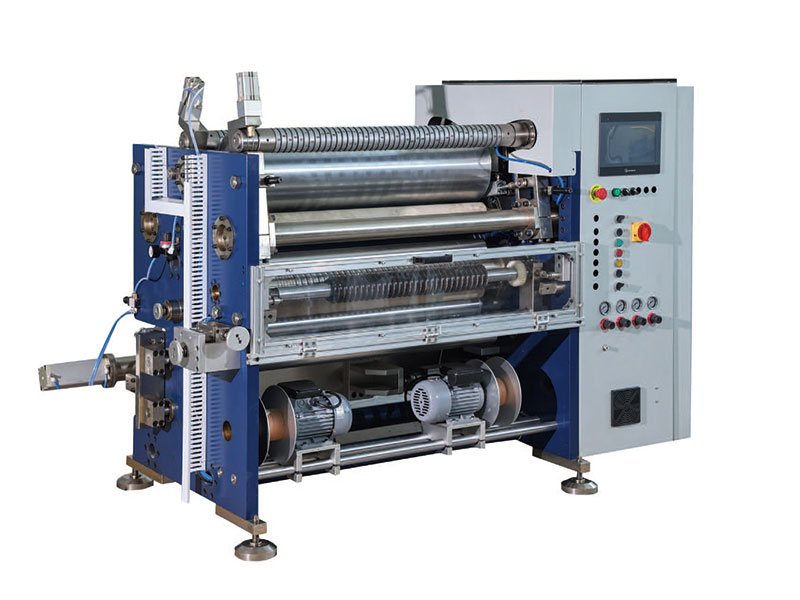 800mm Hot Stamping Foil Slitting Machine
800mm Hot Stamping Foil Slitting Machine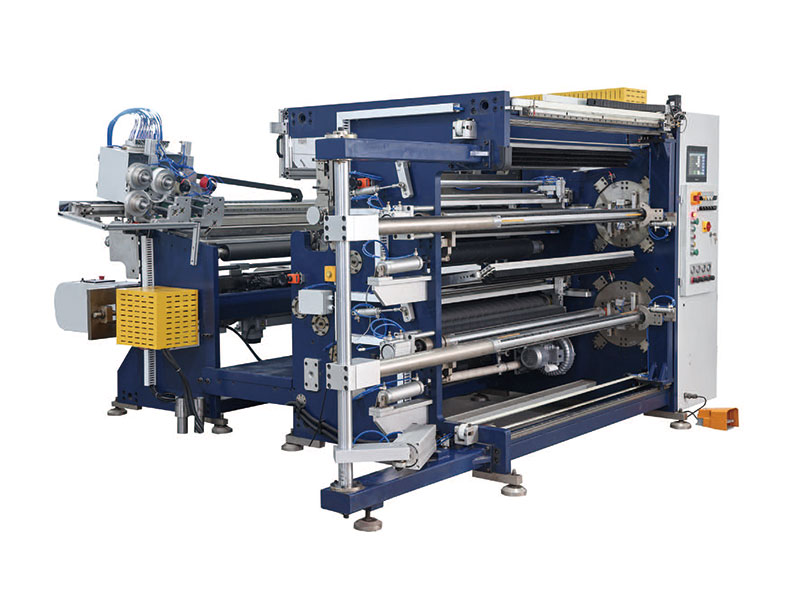 1350mm Hot Stamping Foil Slitting Machine
1350mm Hot Stamping Foil Slitting Machine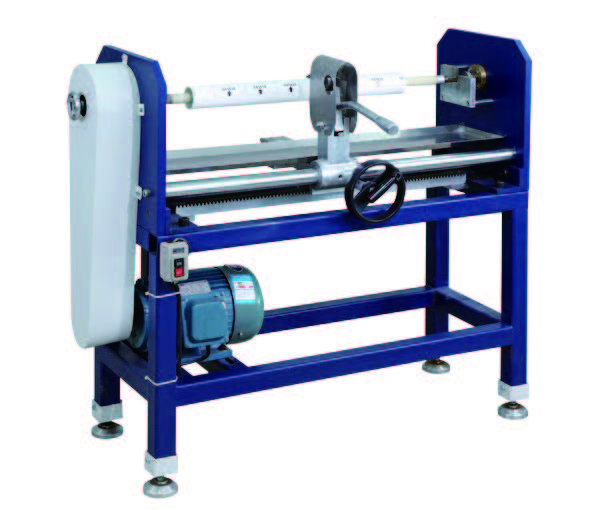 Manual Foil Roll Cutting Machine
Manual Foil Roll Cutting Machine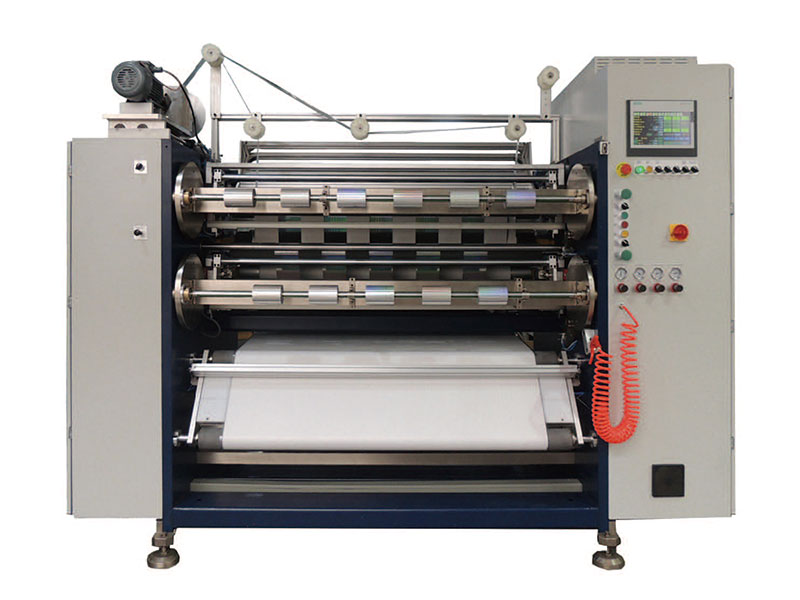 1350mm/1600 Foil Slitting Machine
1350mm/1600 Foil Slitting Machine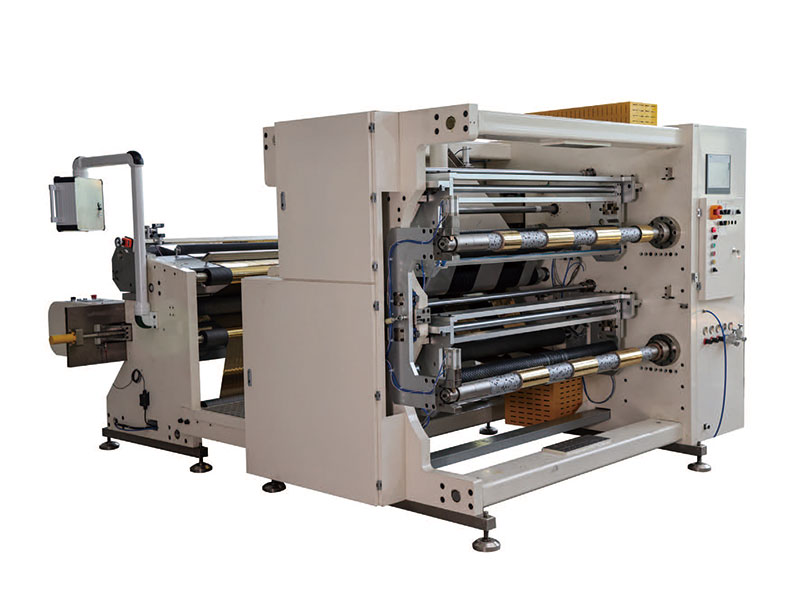 1400mm Copper Foil Slitting Machine
1400mm Copper Foil Slitting Machine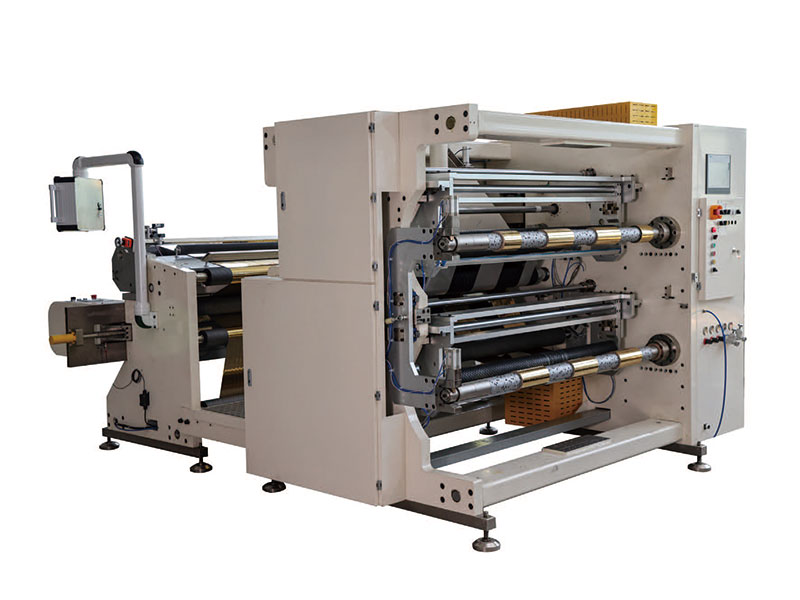 1400mm Aluminium Foil Slitting Machine
1400mm Aluminium Foil Slitting Machine

